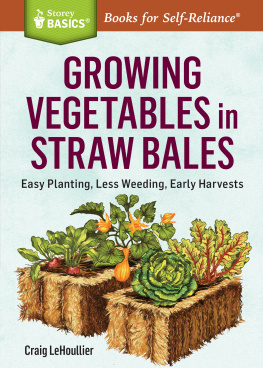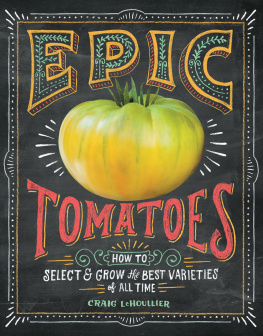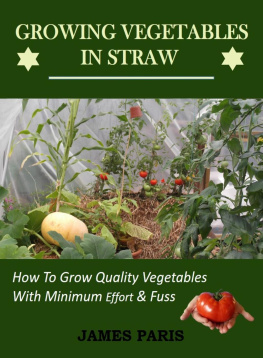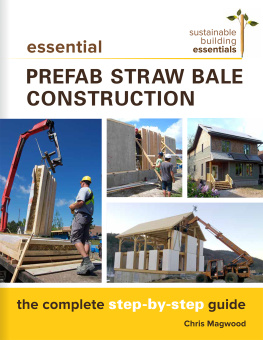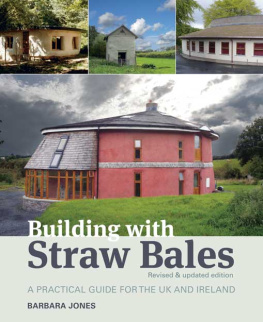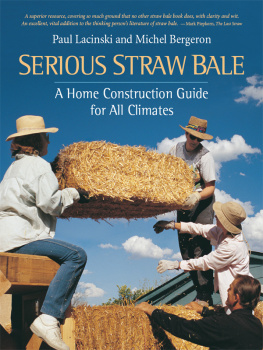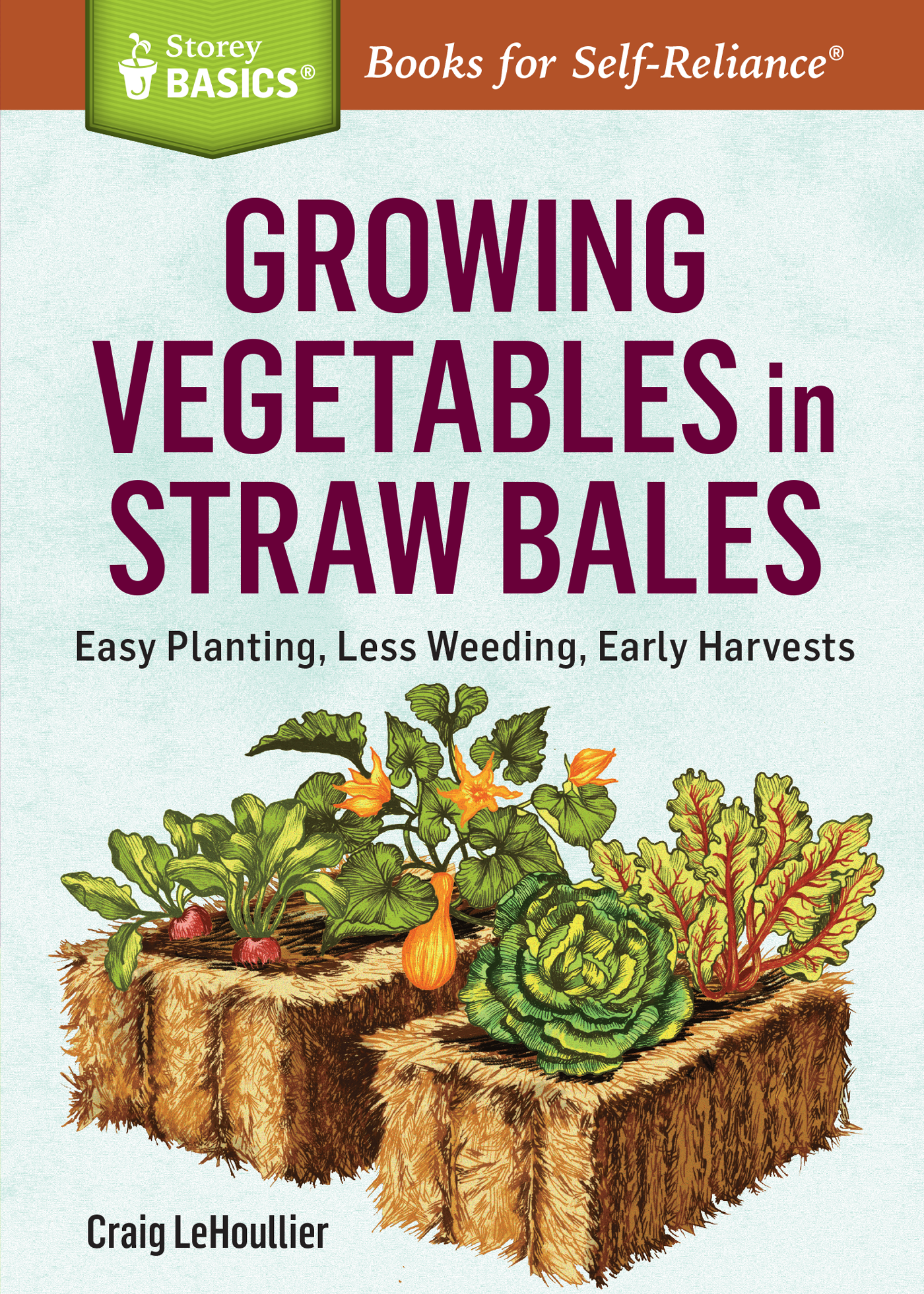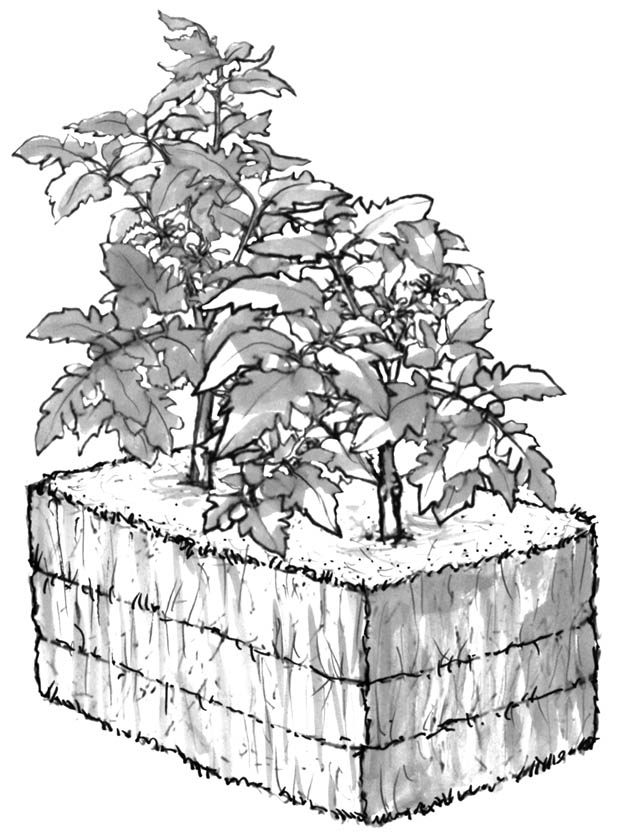Contents
Dedicated to my dad, Wilfred (Wild Fred) LeHoullier, who would have gotten such a kick out of this!
Acknowledgments
My love of gardening was instilled in me as a very young child, as I spent hours in the garden with my dad, Wilfred, and grandfather, Walter. The tendency to think of my own eventual gardens as projects essentially my laboratories grew during my years in college under the guidance of wonderful professors such as Ken Borst, John Williams, Gordon Gribble, and Charles Marzzarcco. All of my gardening adventures were encouraged by my wife, Susan, and daughters Sara and Caitlin. A fascination with gardening using straw bales grew from a chance meeting with Kent Rogers, when NC Tomatoman met NC Straw Bale Man. I was sold from that first exciting discussion, gave it a thorough first try in 2014, and the result is this book. Thanks also to Carleen and Corey at Storey Publishing for helping me turn my fascination with straw bales into something that I can share with others.
Introduction
Most people think of bales of straw as Halloween or other autumn decorations. Some people use straw bales as building material for temporary or permanent structures. Gardeners frequently use straw as an effective mulch to hold in moisture and prevent weed growth. It may come as a surprise, however, to learn that straw bales are perfect plant hosts for successful gardens.
I first heard about growing plants in straw bales from my gardening friend Kent Rogers, whom many gardeners consider to be an expert in the technique. Kent is extremely enthusiastic about it, and what he described sounded too good to be true: a gardening technique thats simple, flexible, effective, and relatively inexpensive. It was also something new and different to me, making it a perfect project for me to tackle as I learned more about gardening. Along with providing healthy food and good exercise, gardening should be interesting and enjoyable. I strive to try something new each season, and plunging into straw bale gardening sounded like a perfect fit.
My initial experience with straw bale gardening was just wonderful. I grew many types of tomatoes, peppers, eggplant, squash, and cucumbers in the nearly 20 bales that were sprinkled throughout my main garden and driveway growing areas. As an avid container gardener, I appreciated a reduction in the need to fill large pots with expensive potting mix. With the various heirloom tomatoes I chose for the bales, having a disease-free start to seedlings translated to better results when compared to growing them in my garden soil. Things went so well that I plan to at least double the number of bales for this years garden. The bales will serve for planting leeks, potatoes, sweet potatoes, and carrots, all of which are a challenge for my soil type but should thrive in the more suitable environment provided by the straw.
Two tomato plants per bale is ideal.
Chapter One
Getting Started
Theres no getting around the fact that gardening is physical work. Although the effort pays off handsomely in fresh, delicious produce, it comes with the unavoidable downsides of a sore back and sweaty clothes. Whether you are turning over the soil in a traditional garden or lugging bags of planting medium for a container garden, you will find it no wonder that gardening is considered good exercise. Happily, straw bale gardening eliminates many of the less enjoyable parts of spring garden preparation. Digging and filling are replaced by simply locating the bales and getting them ready to plant. If that isnt a ringing endorsement of a gardening method, I dont know what is!
How It Works
Heres the simple concept of straw bale gardening: the straw in a bale breaks down over the course of the garden season to provide an effective home for the roots of the plants growing in them.
A bale of straw is like a clean, blank slate. It may be mostly free of plant nutrients, but it is also free of diseases. It acts like a sponge, absorbing water and awaiting application of materials that help the straw break down and produce a perfect environment for the roots.
Although some straw bale gardeners report good results by preparing their bales naturally by simply watering them (see successful. The other basic preparation I recommend consists of regular top additions of high-nitrogen plant food, followed by deep soaking with water. As the straw begins to break down, the process (called bale cooking) generates heat and forms an increasingly absorptive structure that supports healthy root growth. Regular watering and feeding, along with the presence of naturally occurring micronutrients, leads to healthy and vigorous plant growth and high yields of produce.

As you water and fertilize the bale, microbial activity generates heat that moves through the bale and breaks down the straw to provide an ideal habitat for plant roots.
The Benefits
Straw bale gardening offers several advantages over gardening in the ground or in containers:
- You do not need to dig up soil or fill containers.
- The open structure of the bales provides great drainage, so its difficult to overwater your plants, even in periods of heavy rain.
- The extra elevation of the plant surface lessens your need to bend as you tend and harvest the plants, and may reduce access to some ground-prowling critters.
- You can position your bales in the part of your property that receives the best sun exposure.
Both conventional and organic gardeners can use the technique, with just a few minor variations in bale treatments. Straw bales are a great option for gardeners whose plants have been seriously affected by soil-borne diseases in the past. Spent bales, at the end of the season, consist of great material to work into your traditional garden beds to loosen the structure.
Whats Not to Like?
No single gardening approach or technique is perfect, and each be it traditional in-ground gardens, raised beds, containers, or straw bales has strengths, weaknesses, and particular challenges. Here are some considerations specific to straw bale gardening:
- The availability and cost of straw bales can vary widely depending on location.
- It may not be easy to confirm that the bales available to you are herbicide-free, and organic gardeners may have concerns about how the straw was grown.
- For optimum success, you have to allow sufficient time to prepare your bales before planting.
- Feeding and watering schedules are critical, particularly during heat waves and as the plants become large and vigorous.
As a bale absorbs water and is colonized by various decomposing organisms, the straw slowly breaks down to provide even more absorbent material at the plant root zone forming the perfect environment for root crops like potatoes, beets, and carrots. Straw provides lots of structure but little nutritional value to the plant, so timely feeding is important for vigorous growth.

